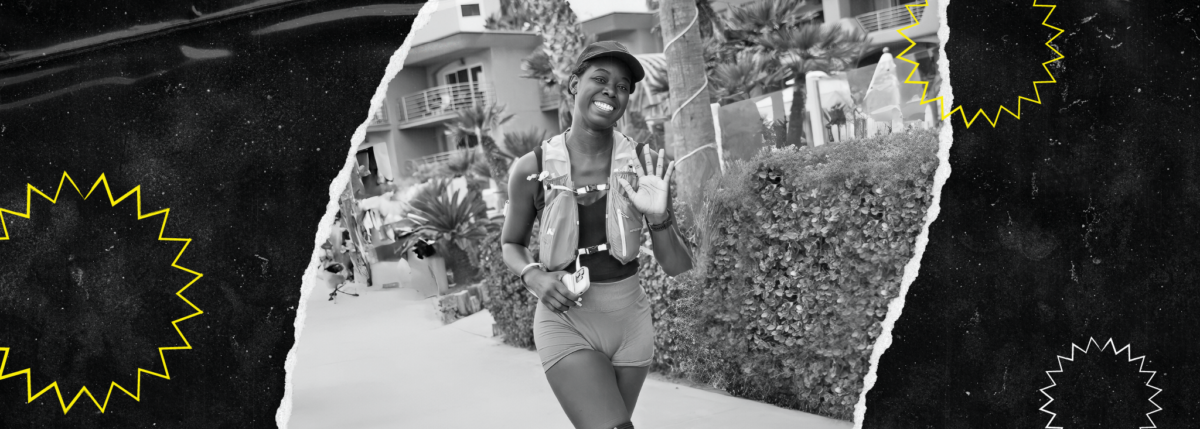How I Empower African-Americans to Live Well with Diabetes
Written by: T'ara Smith
6 minute read
June 20, 2019
Dr. Lisa Sumlin is a researcher who specializes in diabetes treatment. She works with patients with Type 2 diabetes and addresses the common issues minorities face while living with the disease. Read more of her story here.
Lisa Sumlin, PhD., APRN, ACNS-BC, is a researcher, professor, author and a board certified clinical nurse specialist. Throughout her career, she’s gained extensive expertise in diabetes, primarily working with patients at Samaritan Health Ministries and educating members of the Central Texas Community. Dr. Sumlin’s passion lies in helping African-American women adjust to life with type 2 diabetes by addressing the cultural and food practices, weight issues and food-related interventions. African-Americans, in general, are almost twice as likely to be diagnosed with diabetes compared to non-Hispanic whites and are also more likely to suffer from diabetes-related complications such as kidney diseases and amputations.
In her work, she also discusses diabetes-related depression, diabetes in the elderly and physical activity. Visit Dr. Sumlin’s website to learn more about her work. You can also follow her on Twitter, Facebook and Instagram.
Dr. Sumlin chatted with Beyond Type 2 to talk about her work helping people with type 2 diabetes live a high quality of life, diabetes care in the African-American community and misconceptions about diabetes she hears from minorities living with the disease.
How did you begin your career in helping people living with Type 2 diabetes? Do you have any personal experiences with it?

When I finished nursing school and I started working as a registered nurse (RN) many years ago; I worked in a med/surgical unit in the hospital. What caught my attention was that there were a lot of people of color constantly being admitted for complications due to diabetes (kidney failure, multiple amputations, etc). For example, if I were to have six-to-seven patients, five were patients with diabetes and four out of five were people of color—either African-American (AA) or Latino. I kept thinking—what is happening? Why can’t they get the help they need so they will not end up in the hospital on multiple occasions? I could not sit back and continue to watch African Americans suffer from diabetes any longer. I had this ‘urging’, if you will, that I had to do more. I had to somehow stop so many African Americans from ending up with diabetes and diabetic complications.
After a few years as an RN, I returned to school to get both my master’s and Ph.D. in nursing both focusing on African Americans and diabetes management.
I have been on this journey ever since. I still see patients as an Adult Clinical Nurse Specialist. Then, I launched my company EPaD Inc (Empowering People Against Diabetes) about two years ago and subsequently published my first book about diabetes management and food.
As far as my personal experience with diabetes—while I do not have diabetes, I have many family members who do have it. My family members were one of the driving forces for my desire to decrease the effects of diabetes, especially within minority communities.
What are the most common questions and concerns you encounter when working with your patients?
The most common concerns that patients have when it comes to diabetes management is how to eat. Many have received ‘vague’ or no information regarding eating habits and are not sure how to eat healthily and manage their diabetes. Most are under the assumption that they must give up their ‘cultural foods’ in order to maintain optimal diabetes control. Of course, this is not true. It is a matter of learning how to put foods together in a way that will not cause the blood sugars to increase so high. I work closely with people to design meal plans to obtain better diabetes control. I have written a book to help people make changes and still enjoy their cultural foods. My book is called “The Struggle is Real! Diabetes Management for Women Who Love Their Cultural Dishes, Enjoy Food—Focused Social Lives and Appreciate a Good Piece of Fried Chicken Every Now and Then.”
What’s your unique approach to addressing the needs of your patients? How do you get your patients to begin to make positive behavior changes?
Most people have to realize that they have a relationship with food. Yes, a relationship with food. Think about it. When we are happy what do we do? Celebrate with food. When you break-up with your significant other, where do you turn? Food. Food comes into play somewhere no matter what the situation may be. This is a relationship. And just like any other relationship in order to happily co-exist within that relationship the terms of the relationship has to be examined. When it comes to diabetes, there are some aspects of the relationship that has to change in order for there to be harmony, in this case, within the body. Once people realize that their love affair with food is not ‘healthy’ they are willing to make some changes in order to ‘stay together.’
Tell us about your diabetes workshops and seminars. What are the outcomes, goals and take-home messages you want your audience to leave with?
I have completed many workshops and seminars that involve different aspects of diabetes management from dietary changes to dealing with emotional, especially depression and the challenges that result from the diagnoses of diabetes. From all of my encounters with people there are always two key takeaway messages:
- Life is “not over” because of diabetes, this disease can be managed.
- That each person commits to making one achievable goal over the next week from the workshop. Small changes add up to big changes in diabetes management.
 Some of your popular speaking topics include “Cultural Influences on Food practices of African-American/Black Women” and “Type 2 Diabetes and Weighty Issues of African American Women with Type 2 Diabetes,” why do you think those topics resonate with that audience?
Some of your popular speaking topics include “Cultural Influences on Food practices of African-American/Black Women” and “Type 2 Diabetes and Weighty Issues of African American Women with Type 2 Diabetes,” why do you think those topics resonate with that audience?
Many women of color were told that they had to change what they eat in order to manage their diabetes. Some have told me that they were told: “just eat chicken and vegetables”. These same women said that making that type of change was not going to happen. With food-focused cultures like African-Americans, food defines who they are. Being able to prepare cultural meals to everyone’s liking is a part of their identity. So, to hear that they did not have to give up their cultural foods to manage their diabetes is a game-changer for this population.
What do you think are the gaps in diabetes health and education in the African-American community, especially among Black women? How can health professionals close these gaps?
The biggest gap in diabetes health and education is the challenges on behalf of health care providers to understand the importance of cultural identity and food. To request dietary changes in order to manage diabetes causes internal turmoil for African-Americans. Health care providers are becoming more culturally aware. But it is challenging to understand people unless you have walked in their shoes. We, healthcare providers, have to think of ways to help the African-American community resolve this conflict and while controlling their diabetes. Understanding the cultural factors that impact African-Americans will help to bridge that gap between diabetes health and education for African-American (AA) communities.
What are some myths about minorities and Type 2 diabetes management? What are some misconceptions about diabetes you hear from minorities?
“My mother, my grandfather and all my aunts all had diabetes and I am bound to get it also.”
My response: Just because all your family members have type 2 diabetes does not mean you will get it. I remind people that type 2 diabetes is 90 percent based on lifestyle, dietary habits and exercise. People have control of these lifestyle habits. Now, don’t get me wrong there are some people where genetics play a part in the development of diabetes, but 90 percent is a lifestyle for type 2 diabetes.
“My grandmother started on insulin and her leg ended up getting cut off. I am not going on insulin.”
My response: Your grandmother’s diabetes was out of control and she probably did not start insulin soon enough or did not take enough of the insulin to manage diabetes. But insulin has nothing to do with the amputation. Insulin was part of the solution to diabetes control.
“I don’t understand how I got type 2 diabetes I don’t eat a lot of sweets”
My response: The increase in blood sugars are not just due to sweets but to all types of bread, pasta, rice, all types of grains and eating too many fruits (this one is always a shocker). Many people are not aware that all carbohydrates—fruits, grains, dairy (milk/yogurt/ice creams), desserts—increases the blood sugars and we have to balance these foods, not cut them out, but balance them for good health and diabetes control.
Give us three empowering words for people living with diabetes, especially the newly diagnosed, to remain positive as they adjust to life with Type 2.
“Life isn’t over”
I have had so many patients come into my office crying thinking that their life is over because of the diagnoses of diabetes. They feel that because they cannot eat their cultural foods, life as they know it is over. I remind them that life isn’t over. You just have to make some changes so that they can live longer.

Author
T'ara Smith
T’ara was diagnosed with type 2 diabetes in July 2017 at the age of 25. Since her diagnosis, she focused her academic studies and career on diabetes awareness and living a full life with it. She’s excited to have joined the Beyond Type 1 team to continue her work. Two years later, T'ara discovered she'd been misdiagnosed with type 2 and actually has latent autoimmune diabetes in adults (LADA). Outside the office, T’ara enjoys going to the movies, visiting parks with her dog, listening to BTS and cooking awesome healthy meals. T’ara holds an MS in Nutrition Education from American University.
Related Resources

Danica Collins not only prepared for one of the most challenging physical events of her...
Read more

Beyond Type 1 is spotlighting inspiring athletes with type 1 diabetes as they prepare for...
Read more

On November 3, 2024, Taylor Rindfleisch of Chicago laced up her running shoes for the...
Read more

